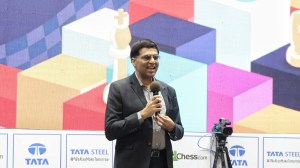E-commerce poised to take off with entry of private ISPs
MUMBAI, NOV 14: With the opening of the internet sector, at least one of the bottlenecks towards facilitating full-fledged commerce on the n...

MUMBAI, NOV 14: With the opening of the internet sector, at least one of the bottlenecks towards facilitating full-fledged commerce on the net has been removed. A number of players like Satyam Infoway and the Global group are specifically targeting this sector based only the strength of fantastic projections.
According to one survey, e-business — as IBM likes to call it — accounted for more than $ 2.6 billion sales worldwide, in 1997. The boom is expected to continue and exceed $ 100 billion by 2000. By 2001, e-commerce will account for almost one per cent of global economy.
In this scenario, no company — Indian or overseas — can afford to ignore this as channel. Although India has seen very little e-commerce so far, the situation is not very different from what the rest of the developed world has witnessed. Projections from International Data Corporation (India) indicate e-commerce will have an exponential growth even here touching Rs 3000 crore by 2000 from barely Rs 1 crore today.
With this inmind, Satyam Infoway has already invested in connecting 12 cities in the country through fibre optic cable. Global Telecom Services recently changed its name to focus on e-commerce to Global Electronic Commerce Services Limited (GECS). A host of other software players, which are not into this area, are also attempting business to business e-commerce projects, in anticipation of the big boom.
Says Harish Joshy, associate vice-president of Aptech, "It is a high growth area. Everyone wants to get into it but no one knows the right formula." Aptech itself is implementing an Electronic Data Interchange (EDI) to connect with franchises in different cities but will not give details because of competition. E-commerce comes in two flavours: EDI or business-to-business (B-to-B) e-commerce and business-to-consumer e-commerce. Of the two, B-to-B is the less hyped, bigger growth area.
According to a Price Waterhouse report on the web, though business-to-business commerce is not as visible as consumer sites, it isquantitatively more significant. "Business drives real dollars while consumer sites drive headlines," New York Goldman Sachs was quoted as saying.
To implement an business-to-consumer solution too, it is necessary to first have a fully automated backend. This means, companies like Dell which have made history by implementing online ordering with personalised computer configurations, first had to have a business-to-business model in place with their suppliers. Same is true of amazon.com, the most famous virtual bookstore.
"Dell is a perfect example of an end-to-end e-commerce product," says Rajiv Wadhwa, head of marketing services, GECS. GECS has implemented B-to-B solutions for a number of companies. The advantages, especially for a high-cost inventory industry like automobiles, are enormous. It is reduces inventory and keeps purchase and marketing costs low. According to Wadhwa cutting down on inventory storage from 90 days to 15 days, can result in savings of Rs 25 crore for such industries.
In fact,most of the prime players in the auto industry have already implemented B-to-B solutions with their suppliers. R Ramaraj, managing director, Satyam Infoway, reveals that the auto industry is in the process of concluding a detailed EDI project involving large OEMs like Bajaj, Telco, Ashok Leyland and some of the largest auto component manufacturers like MICO and Sundaram Fasteners. "Keeping track of inventory and wondering how to reduce it occupies every purchase manager’s mind. With EDI, a company can bring down inventory by 10 to 20 per cent. This can translate to into more than Rs 2 crore of annual savings for a Rs 150 crore company," adds Ramaraj.
Companies like Cisco which reportedly ship 45 per cent of their products "without being touched by human hands" save around $ 550 million a year as a result of transferring most of their business to the net.
Business-to-Business e-commerce can benefit any company which wants to take a serious look at the way it is purchasing today. It is especially suited forthose companies whose business depends on information, FMCG organisations, companies with lot of international trade, and those buying from larger number of suppliers. For instance, Henkel, has implemented an EDI solution to move critical data from its various carrying and forwarding agents to the head office at Chennai on a daily basis. Earlier, this was done only on a monthly basis and data was sent through floppies. "The company was finding it very difficult to forecast their production and logistic demands accurately," says P R Sridhar, product manager at Satyam, which executed the project.
India cannot as yet boast of success stories like Dell and Cisco. Even players like Rediff on The Net who are experimenting with the internet as a sales channel are constrained by the lack of a law which recognises digital signatures. PC penetration is low and internet connections are still fewer at 150,000. The recommendations of the IT Task Force is poised to change all this and companies are optimistic that Indiawill replicate Cisco’s success in the next twelve months.



- 01
- 02
- 03
- 04
- 05




























